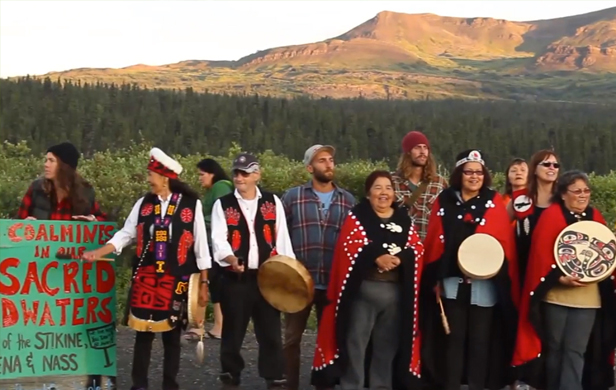
Few places on our planet have been unaffected by humans. Satellite images taken from hundreds of kilometres above Earth reveal a world irrevocably changed by our land use over just the past few decades.
From Arctic tundra to primeval rainforest to arid desert, our natural world is being fragmented by ever-expanding towns and cities, roads, transmission lines and pipelines, and pockmarked by mines, pump jacks, flare stacks and other infrastructure used to drill, frack and strip-mine fossil fuels.
Areas that have remained relatively free of industrial development have thus taken on a special significance. They’re places where a wide range of animals feed, breed and roam in large numbers, where rivers run wild and indigenous people fish, hunt and practise traditional ways.
‘Serengeti of the North’ lacks proper protection
In Canada, they include awe-inspiring landscapes like the boreal forests of Pimachiowin Aki in northern Manitoba, Gwaii Haanas off Canada’s West Coast and the Sacred Headwaters (called Tl’abāne in the local Tahltan language and pronounced Klabona in English) in northwestern B.C. The latter is the birthplace of three of the continent’s great salmon rivers, the Stikine, Skeena and Nass.
The rivers of the Sacred Headwaters originate close together, as small streams percolating from beneath rich meadows on the high plateau. Fed by waters from the surrounding mountains and valleys, they drive toward the North Pacific Ocean with great force, shooting through gorges that rival the Grand Canyon in grandeur and cascading over breathtakingly beautiful waterfalls.
Unblemished by dams, clearcuts or mines, and with an abundance of wildlife, including grizzly bears, wolves, caribou and the world’s largest population of stone sheep, the Sacred Headwaters has been called the Serengeti of the North.
Places like the Sacred Headwaters owe their continued existence to indigenous peoples who have lived there for thousands of years, and who have consistently resisted incursions of industrial development that would harm their ancestral lands – often putting their own bodies on the line to block trucks, earth-movers and drilling equipment.
But while Pimachiowin Aki and Gwaii Haanas are now thankfully protected under law, the Sacred Headwaters is not. It remains at risk from a multitude of proposed mines, railways, transmission lines and other projects that will eviscerate the landscape if approved.
Coal mine threatens Sacred Headwaters
The projects include a 44-square-kilometre open-pit anthracite coal mine that would level Klappan Mountain, at the very heart of the Sacred Headwaters. The mine, proposed by Fortune Minerals, a small company based in London, Ontario, would devastate land the B.C. government led the Tahltan Nation to believe would be protected.
The Tahltan are not opposed to all industrial development, and have partnered with many resource companies to generate jobs and economic opportunities for their community. But they believe some places, like the Sacred Headwaters, are too important to be developed and should be safeguarded. The Tahltan earlier stopped one of the world’s largest corporations, Royal Dutch Shell, from fracking the area for coalbed methane gas. On August 16, they issued Fortune Minerals an immediate eviction notice.
Tahltan blocking mine

As I write, the Tahltan, including elders who were arrested while keeping Fortune Minerals out of the Sacred Headwaters a decade ago, have gathered at their usual hunting camp on Klappan Mountain to peacefully oppose the mining company, which began test-drilling earlier this summer, with the government’s approval.
Tahltan First Nation members have been joined by non-aboriginal allies, such as the Skeena Watershed Conservation Coalition. With the support of the wider community, which has brought food, water, firewood and other essentials, the Tahltan are vowing to stay on Mount Klappan until Fortune Minerals leaves the Sacred Headwaters for good.
American poet Gary Snyder has been quoted as saying, “The most radical thing you can do is stay home.” The phrase has come to have many associations, most notably to describe a sense of place and the profound power of communities coming together to protect it.
Snyder’s poetic description of what is a radical is an appropriate portrayal of the Tahltan’s peaceful defence of their Sacred Headwaters home. The word “radical” originates with the Latin for “root” or “having roots”. The Tahltan’s presence in the Sacred Headwaters is ancient and deeply rooted and will not easily be removed.
Written with contributions from David Suzuki Foundation Ontario and Northern Canada Director General Faisal Moola.

